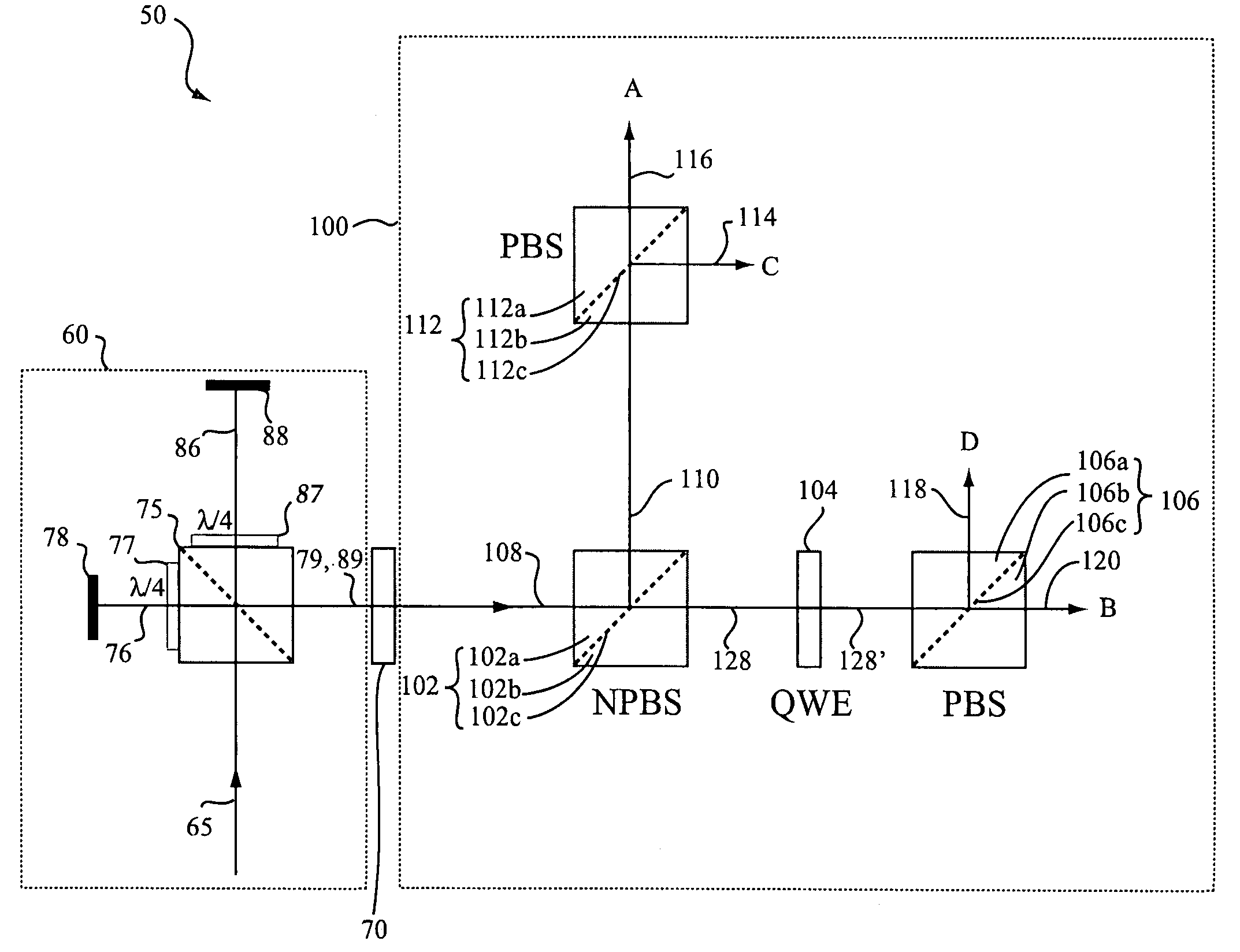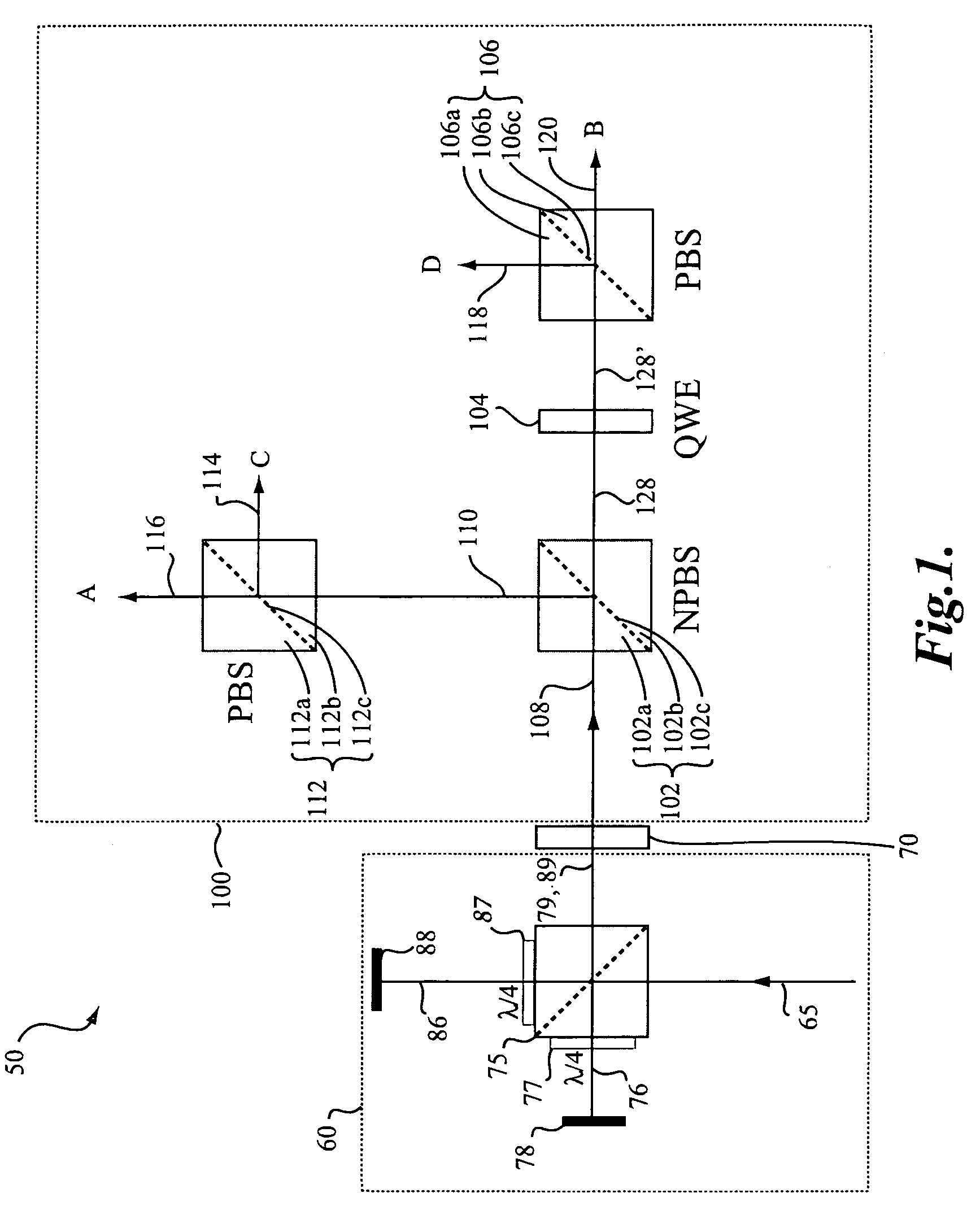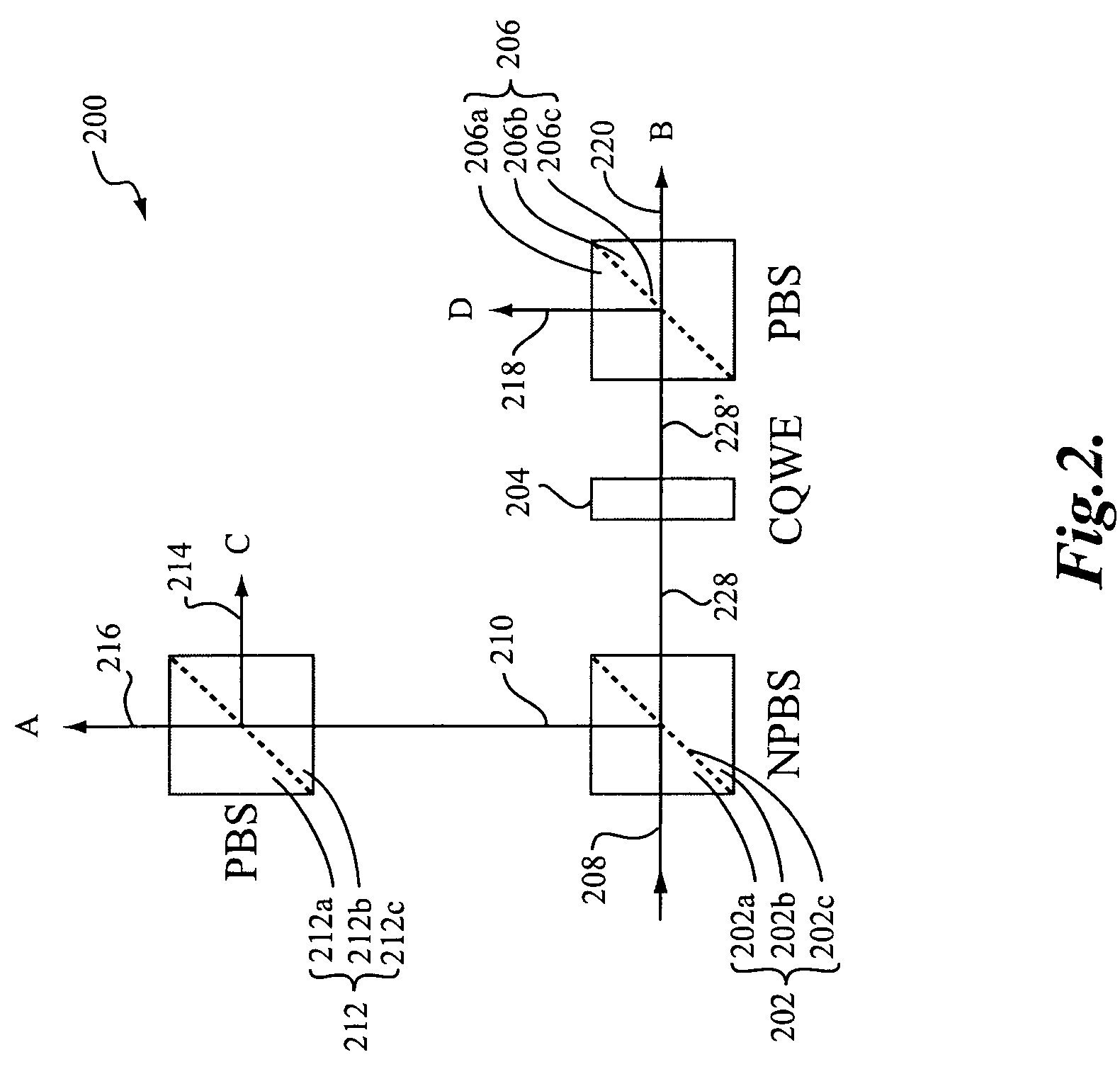Detector configuration for interferometric distance measurement
a technology of interferometer and detector configuration, which is applied in the direction of interferometers, measurement devices, instruments, etc., can solve the problems of affecting the accuracy, complexity, and/or reliability of the detector used for phase difference measurement, and the resolution and/or accuracy of the polarization interferometer are often limited,
- Summary
- Abstract
- Description
- Claims
- Application Information
AI Technical Summary
Benefits of technology
Problems solved by technology
Method used
Image
Examples
Embodiment Construction
[0026]FIG. 1 shows a schematic diagram of an exemplary interferometric distance measuring apparatus 50, including an interferometer portion 60 and a detector 100. In the interferometer portion 60, a laser source (not shown) may be used to generate coherent radiation 65. The radiation 65 may pass through appropriate components (not shown) to adjust the polarization of the radiation 65 as desired, and it is then incident on a polarizing beam splitter 75, which may transmit the portion of the radiation 65 that is “p” polarized to form reference beam 86, and reflect the portion of the radiation that is “s” polarized to form object beam 76. The reference beam 86 is transmitted through a quarter wave plate 87 to a fixed reference mirror 88 and reflected back through the quarter wave plate 87 to reach the polarizing beam splitter 75. Its polarization is now rotated 90° relative to its initial transmission through the polarizing beamsplitter 75. Thus, it is reflected by the polarizing beam ...
PUM
 Login to View More
Login to View More Abstract
Description
Claims
Application Information
 Login to View More
Login to View More - R&D
- Intellectual Property
- Life Sciences
- Materials
- Tech Scout
- Unparalleled Data Quality
- Higher Quality Content
- 60% Fewer Hallucinations
Browse by: Latest US Patents, China's latest patents, Technical Efficacy Thesaurus, Application Domain, Technology Topic, Popular Technical Reports.
© 2025 PatSnap. All rights reserved.Legal|Privacy policy|Modern Slavery Act Transparency Statement|Sitemap|About US| Contact US: help@patsnap.com



